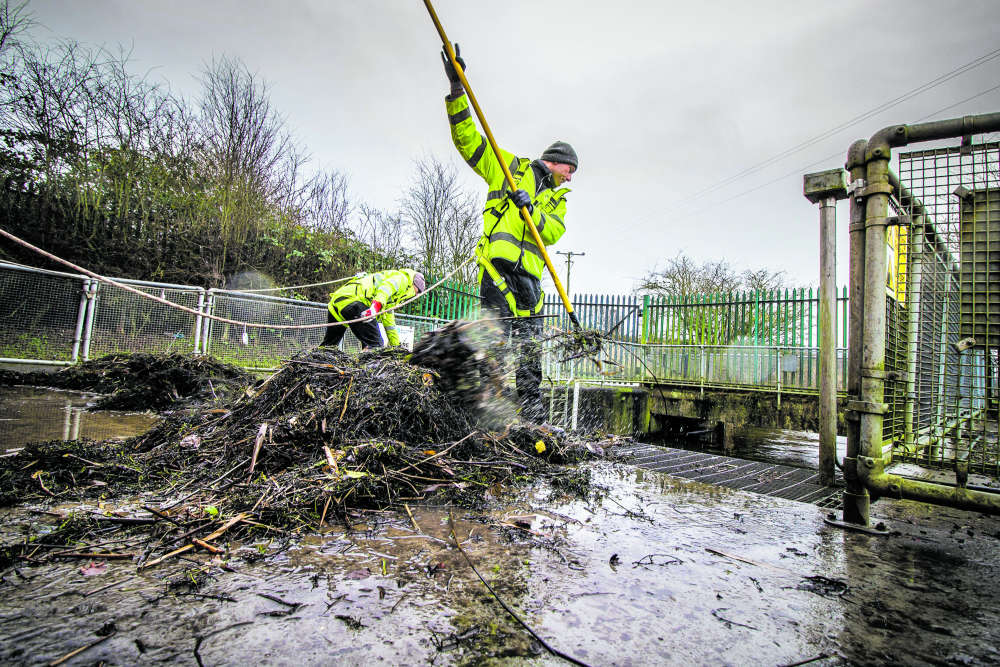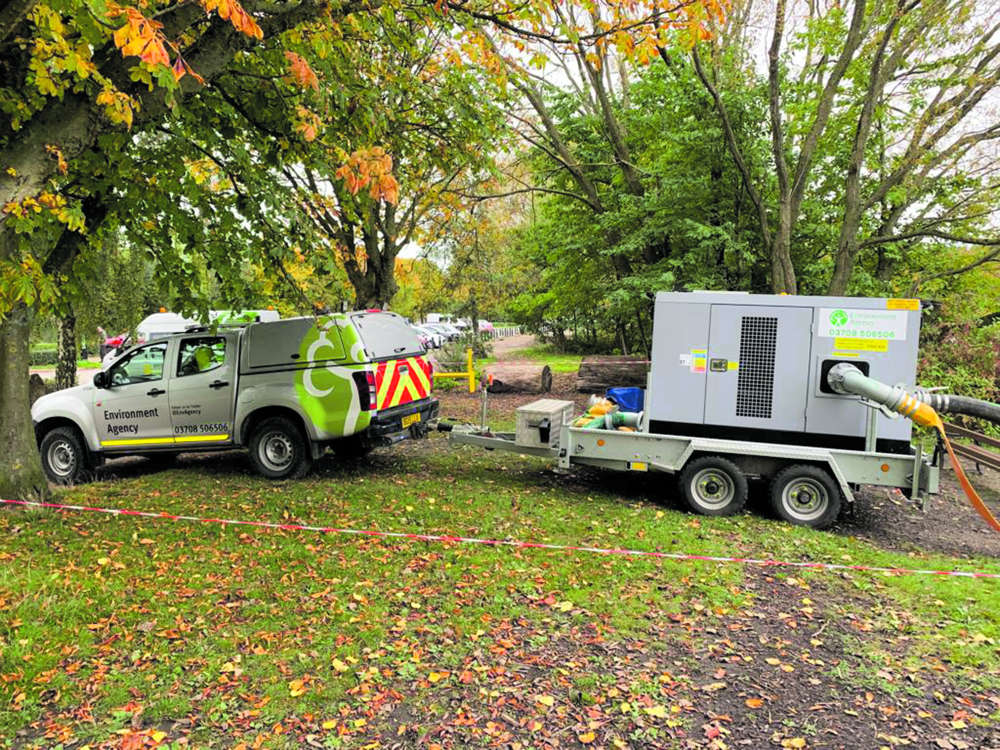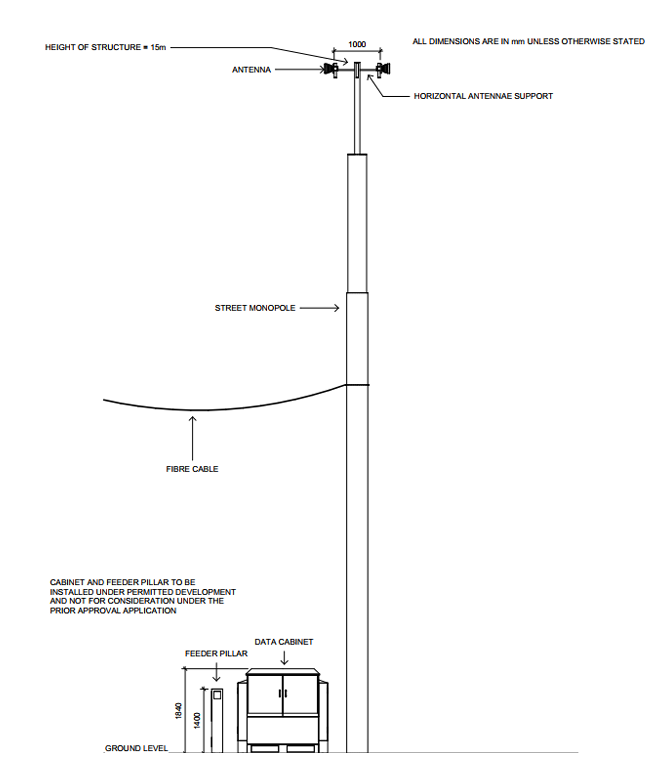
Environment Agency Area Director Lesley Worswick has penned her latest column, in which she looks back at COP26 and the flood preparations in hand as the storm season gathers pace.
In recent times all eyes have been turned to Glasgow where global leaders met at the 26th UN Climate Change Conference of the Parties (COP26).
The stage was set for a historic summit, with make or break decisions needed to confront both the nature crisis alongside the climate crisis.
As part of the Environment Agency’s mission to create better places for people, wildlife and the environment, we need to play our part in tackling both - with urgency.
It is clear that we are already seeing the impacts of climate change in the UK and around the world.
We’re seeing more extreme weather, with an increase in flooding, coastal erosion and landslips.
The most recent climate change predictions confirm we will experience wetter winters and drier summers, with an increased likelihood of more intense rainfall leading to flooding.
Sadly, we are experiencing this head-on. We have had Storm Arwen and Storm Barra, while in October heavy and intense rainfall, the third highest 36-hour accumulation of rain since 1994, hit the North West from around 2am on October 27.
On that date in Greater Manchester, Merseyside and Cheshire, 2,768 properties received flood alerts. However, we were lucky to miss the worst of the impacts then with no confirmed reports of properties flooding.
Many were protected by our flood defences and the dedication of our field teams clearing screens and removing blockages from our rivers.
The same can’t be said for our communities in Cumbria. While Environment Agency teams defences, and assets protected hundreds of homes and businesses 43 properties tragically flooded. As the rain finally dried up, my thoughts were with all those affected. I know my colleagues in Cumbria were fully focused on recovery and doing everything possible to support those communities.
We don’t know what else the elements may have in store for us this winter but we are ready to take action wherever it is needed.
This month, our field teams - who reduce flood risk by maintaining our assets such as embankments, defences and debris screens – have been ramping up for our busiest season with incident response training
We train all year round to make sure we are equipped to respond to incidents, but at this time of year with an increase in flood risk, it’s vital we make sure we are prepared.
One such test saw our staff and contractors team up at Pennington Flash in October to test out mobile pumps and water cannons.

DRIVING ON: EnviroTraining at Pennington Flash
The six-inch pumps, mounted on trailers are designed as reactive measures, which can be deployed at short notice to get rid of floodwater.
They are capable of pumping 150 litres of water per second – the equivalent of filling one and half baths in a second!
Other exercises will be carried out by teams from our three depots in Leigh, Sale and Winsford across the North West in the run-up to Christmas so do keep a look out for us and give us a wave if you spot the noticeable EA yellow coats!
As individuals, preventing flooding can sometimes feel overwhelming since being flooded is not the worst part; it is the recovery from them that is the real challenge.
Environment Agency analysis shows nearly two in three households at risk of flooding don’t believe it will happen to them. Thirty per cent of households at risk have not made basic preparations such as signing up for flood alerts – this means as many as 1.5 million households who are at risk are yet to prepare.
I know all too well how hectic daily life can be. But, regardless of all the other ‘stuff’ going on in our lives, being flooded can often break people.
Research from Public Health England has shown that the mental health impacts of flooding can last for two years or more with depression, anxiety and PTSD affecting up to a third of people who have been flooded.
It’s true that ambitious action is now being taken at national level to reduce flood risk.

LEAKY DAMS: Natural protection
A record £5.2 billion is being invested between 2021-27, creating around 2,000 new flood and coastal defences to better protect 336,000 properties across England.
More than £42 million of this will be spent in 2021-22 boosting the design and construction of more than 50 schemes across Greater Manchester, Merseyside and Cheshire.
We are also using the power of nature to boost our flood resilience with our national £15 million Natural Flood Management Programme (NFM) also completing this month.
More than 15,000 properties are more resilient to the effects of flooding and climate change as a result of this programme with many of the schemes pioneering across the hills surrounding Greater Manchester.
The NFM programme has shown us what we can do, together. We can all take personal action to protect the things we care about from the devastation of flooding.
This autumn for example, I will be doing my best to reduce my risk by participating in the Agency’s annual Flood Action Campaign.
I will be checking my flood risk at https://www.gov.uk/check-flooding, making a flood plan and thinking about the things I would want to save should the worst happen.
I encourage you to all do the same. After all, it always pays to be prepared.


 Bronze medallist visits Dukinfield primary school
Bronze medallist visits Dukinfield primary school
 Four new masts could be put up across Tameside soon.
Four new masts could be put up across Tameside soon.
 Local colleges to get Government boost
Local colleges to get Government boost
 Adoption podcast reaches new highs
Adoption podcast reaches new highs

